by Lacey Cooke | Apr 19, 2019 | 01 What's New, Records & databases
It’s a great week for new genealogy records online! We’re featuring German vital records now available at Ancestry.com, including civil registers, parish records, and census records. You can also explore two updated Italian records collections at FamilySearch, plus check out an expert interview for tips on researching your Italian ancestors. Lastly, Findmypast is continuing to to expand their international records with a new Jamaican records collection. Happy researching!
Featured: German Genealogy Records
Ancestry.com, one of the Genealogy Giants subscription websites, has several new German vital records collections now available online. Specifically, Trier, Germany.
You can find a wealth of genealogical information in these civil registers, parish records, and census records. Look for names, dates, locations, parents and spouse names, occupations, and even some narrative comments in margins.
- Trier, Germany, Births, 1798-1904
- Trier, Germany, Baptisms, Marriages, and Burials, 1600-1798
- Trier, Germany, Marriages, 1798-1924
- Trier, Germany, Deaths, 1798-1950
- Trier, Germany, Census, 1795-1864
The city of Trier has an interesting history, and is among the oldest cities in Germany. It was founded by the Celts in the late-4th century BC and was known as Treuorum. Later on the city was conquered by the Romans in the late-1st century BC and renamed Trevorum or Augusta Treverorum.
In the Middle Ages, the Archbishop-Elector of Trier was an important prince of the church, and Trier is the oldest seat of a bishop north of the Alps. The archbishop-electorate controlled land from the French border to the Rhine. The Archbishop-Elector also had great significance as one of the seven electors of the Holy Roman Empire. You can learn more about Trier and more available genealogy records at the FamilySearch wiki page for the city here.
Additionally, there is a new collection for Barnim, Germany, Deaths, 1874-1966. The name directories are arranged alphabetically according to the last name of the deceased. They are bound as separate volumes covering several years each. They contain the following details: sequential number, last names and given names of the deceased, residence, and cross reference to death register.
Updated Italian Genealogy Records at FamilySearch
Over at the all-free website FamilySearch, two Italian genealogy records collections have been updated.
If you’re searching for Italian ancestors, check out episode #207 of The Genealogy Gems Podcast! In this episode, you’ll hear from Mary Tedesco, a co-host of PBS’ Genealogy Roadshow. Mary shares stories and tips about tracing Italian and Italian-American roots.
New Jamaican Genealogy Records Online
Lastly, we head to Findmypast for an exciting new addition to their database. While Findmypast focuses on British and Irish records, they are rapidly expanding their international collections as well!
The latest in this expansion is a big boost of genealogical records for Jamaica. The update includes five new sets encompassing over 2.4 million parish and civil register entries for births, baptisms, marriages, deaths and burials dating back to the mid-17th century.
Jamaica is divided into three counties:
- Cornwall
- Middlesex
- Surrey
Within each county are parishes, the fundamental civil administrative unit. Genealogy records in Jamaica are kept at this local level.
At Findmypast you can currently search:
These collections may help you discover your Caribbean ancestors and add a Jamaican branch to your family tree.
German Genealogy Research Tips From an Expert
Researching your ancestors deep into Germany simply doesn’t happen unless you know the name of the village of origin. In this video presentation renowned German genealogy expert James M. Beidler goes over the sources to tie your immigrant to a Heimat (Heimat (pronounced [ˈhaɪmat]) is a German word translating to “home” or “homeland” ) and then find the village and its records!
Lacey has been working with Genealogy Gems since the company’s inception in 2007. Now, as the full-time manager of Genealogy Gems, she creates the free weekly newsletter, writes blogs, coordinates live events, and collaborates on new product development. No stranger to working with dead people, Lacey holds a degree in Forensic Anthropology, and is passionate about criminal justice and investigative techniques. She is the proud dog mom of Renly the corgi.
Disclosure: This article contains affiliate links and Genealogy Gems will be compensated if you make a purchase after clicking on these links (at no additional cost to you). Thank you for supporting Genealogy Gems!
by Sunny | Sep 28, 2018 | 01 What's New, Records & databases |
Obituaries and death indexes feature prominently in recently-updated collections at Ancestry.com. These collections take us around the world: from Australia to the U.S., Canada, England, Scotland, Ireland and Wales, then to Germany and The Netherlands.
Featured: Obituaries and death indexes
Genealogy giant subscription website Ancestry.com has updated 17 collections, several of which relate to obituaries and other death records. Many of these collections focus on recent deaths, which may not seem as valuable at first glance. But many obituaries contain genealogical clues back one or two or more generations, helping you link ancestors and descendants to each other in your family trees.
Furthermore, clues about a person’s death can lead you to all kinds of additional records: civil or church death records, tombstone inscriptions, cemetery and funeral records, wills and probate records, and even memorials in church or civic publications. So this is one must-have record type for every possible person on your tree for the past 100 years, or even more!
All the following collections come from Ancestry.com, where you can go to Search > Catalog to find the individual collections named below. (Just enter the collection title in part or full.)
Australia/New Zealand obituaries
“Australia and New Zealand, Obituary Index, 2004-2018,” now has more than 377,000 records. This is a fairly recent collection, but we also reported last month on updates to a sister collection of Australian newspaper vital notices dating back to the 1830s.
British Isles obituaries and deaths
An offsite collection that’s indexed on Ancestry, “Web: UK, Coal Mining Accidents and Deaths Index, 1878-1935,” now has nearly 103,000 records. According to the collection landing page, “This data is published by The Coalmining History Resource Centre. You can often find additional information by visiting the source website, including references, publication information, comments, historical context, and even images.”
The “England and Wales, Death Index, 2007-2017” at Ancestry.com now has more than 1.2 million records. The collection description says, “This collection is a compiled index that covers approximately 55% of the total deaths that occurred in this time period. This index provides death details for people in England and Wales, specifically their name, gender, date of birth or age at death, date of death, and residence place at death.”
“UK and Ireland, Obituary Index, 2004-2018” now claims more than 1.6 million records of recent deaths. “The collection contains obituaries from hundreds of newspapers. We work with partners to scour the Internet regularly to find new obituaries and extract the facts into our database. Where available we include the original URL link to the source information.”
The “Scotland and Northern Ireland, Death Index, 1989-2017” now includes over 525,000 records. It’s “a compiled index that covers approximately 45% of the total deaths that occurred in this time period. This index provides death details for people in Scotland and Northern Ireland, specifically their name, gender, date of birth or age at death, date of death, and residence place at time of death. However, they do not include the General Register Office (GRO) reference information. The index also contains a small number of records for people in Jersey and Isle of Man.”
Canada obituaries and notarial records
Ancestry’s collection of “Quebec, Canada, Notarial Records, 1637-1935” now tops 16.5 million records! According to the site, “Notarial records are private agreements (contracts), written by notaries, who are considered legal professionals. This collection consists of notarial records for Quebec from the years 1637 to 1935. Each notary set up practice and kept sets of records for documents they created.”
Looking for Canadian obituaries? The “Canada, Obituary Collection, 1898-2018” now has more than 1.4 million entries. Its historical depth—more than 100 years—and its inclusion of recent deaths set it apart from some other obituary indexes reported here.
Germany vital records
The collection “Mainz, Germany, Births, Marriages and Deaths, 1798-1875” now has nearly 900,000 records. The site offers excellent background for this database: “The current capital of the Rhine-Palatinate state in Germany, Mainz has a rich and storied history….Since the late 18th century, Mainz has been at times under French, Prussian, and German rule, and for a brief spell, it was a democratic free state.
“Initially, registrations of births, marriages, and deaths were kept by religious denominations, but with French occupation in the 1790s, a system of civil registration modeled on the French system was implemented in 1798. This collection includes civil registrations of births, marriages, and deaths beginning in 1798 and extending to 1875. In 1876, civil registration was implemented across unified Germany, and some of those records can be found in other Ancestry collections.”
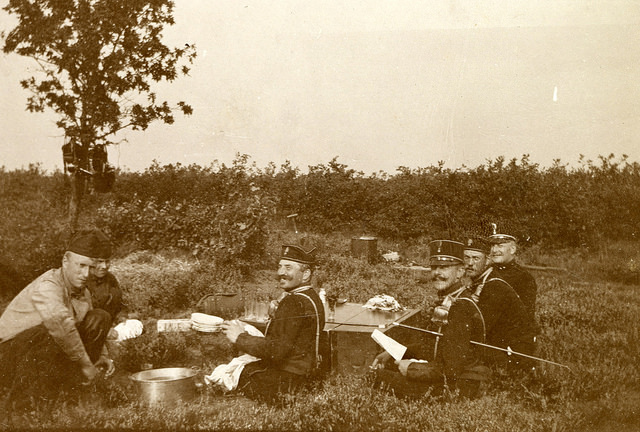
“Exercise Field Artillery Corps” album, image AKL092038, Netherlands Institute of Military History uploads at Flickr Creative Commons, https://www.flickr.com/photos/nimhimages/16026248719/.
The Netherlands: Obituaries and more
The Ancestry.com collection “Netherlands, Newspaper Announcements Index, 1795-1945” now has over 5 million records. “This collection consists of an index to announcements and advertisements from various newspapers. Approximately forty percent of the records are death (Overlijden) announcements. Just under one-quarter of the records are birth (Geboorte) announcements, and nearly as many are miscellaneous (Diversen) announcements or advertisements. The remaining records consist of marriage (Huwelijk) announcements. Details vary depending on the event….Also included is the name of the archive where the original record can be found, as well as a link to the record on the source website. In most cases, additional information about the original record will be available via that link. In some cases, images of the original records may be available via that link as well.”
United States obituary and death records
Two enormous collections of U.S. obituary and other death records have been updated at Ancestry.com. “U.S., Cemetery and Funeral Home Collection, 1847-2018” has passed 9 million records. The site describes the collection as one harvested from cemetery and funeral home records all over the Internet (to which individual entries link, wherever possible). A related collection, “U.S., Obituary Collection, 1930-2018,” now has nearly 40 million records, and is also described as a compilation of records gleaned from many resources online.
Got Oregon Trail ancestors? The “Willamette Valley, Oregon, Death Records, 1838-2006” collection now has more than 158,000 records. It “contains a collection of various death records for Willamette Valley, Oregon. Most are from Marion County. They include funeral home records, cemetery records, newspaper obituaries, and death certificates transcribed or compiled by members of the Willamette Valley Genealogical Society.”
Now topping 5 million records, the “New York, Death Index, 1852-1956” collection “consists of indices of deaths from the state of New York. Details vary, but may include the following information for the deceased: name, death date, death city, age at death, gender [and] certificate number.”
More to learn about obituaries
Not motivated enough yet to pursue obituaries for your relatives? Read our free article, 12 things you can learn in obituaries, and you’ll probably change your mind! An obituary isn’t just a record of a death: it’s often a window into a lifetime.
Disclosure: This article contains affiliate links and Genealogy Gems will be compensated if you make a purchase after clicking on these links (at no additional cost to you). Thank you for supporting Genealogy Gems!
by Lacey Cooke | Dec 8, 2017 | 01 What's New, Ancestry, Canadian, German, Records & databases
Big records updates at the Genealogy Giant website Ancestry.com! Brand new collections of birth, marriage, death, and census records for Canada were added this week, along with a Remembrance Book for the 100th anniversary of the Halifax explosion. Additionally, new vital records are now available for Germany.
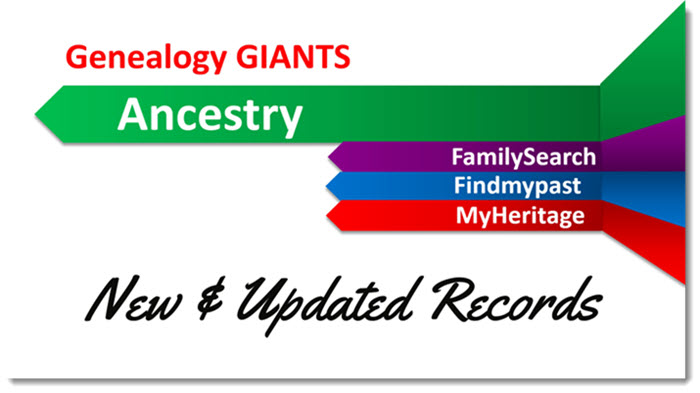
Canada – Birth, Marriage, Death, and Census Records
This year, December 6th marks the 100th anniversary of the Halifax explosion, which was a devastating maritime disaster in Nova Scotia, Canada. Ancestry has recently made available the ‘Halifax Explosion Remembrance Book,’ an online searchable database with detailed information for 1,946 casualties – more than 300 of whom are recently-confirmed and identified victims.
Ancestry also had a huge update of vital and census records this week for Canada:

AncestryDNA for Canada is on sale for just $99! Reg. $129 CAD. Sale ends 12/24/17. Excludes tax & shipping.
Alberta. Explore the new Births Index, 1870-1896, the Deaths Index, 1870-1966, and the Marriages Index, 1898-1942. Note that the marriage index is slightly irregular, in that each image only includes either the bride or the groom and their marriage year.
Newfoundland. Search baptisms and marriage records in the new collection of Church Records, 1793-1899. You’ll also find records from various churches in Newfoundland in the Births, Marriages, and Deaths, 1757-1901 collection, and the Births, Marriages, and Deaths, 1850-1949 collection. Also available are the 1921 Census, the 1935 Census, and the 1945 Census. Those databases originate from the Newfoundland Department of Tourism, Culture, and Recreation.
New Brunswick. New vital records collections start with Births and Late Registrations, 1810-1906. Then you’ll find Marriages, 1789-1950, which include registers, certificates, delayed registrations, and returns. And Deaths, 1888-1938 is also now online.
Prince Edward Island. Baptisms, Marriages, Burials, 1780-1983 is comprised of church records for Prince Edward Island. The Marriage Registers, 1832-1888 collection was created from newspapers, church records, and other sources that may or may not be provided. The Death Card Index, 1810-1913 contains pictures of the index cards from the Prince Edward Island Provincial Archives.
Nova Scotia. Lastly, Antigonish Catholic Baptisms, Marriages, and Burials, 1823-1905 are now available for Nova Scotia. The earlier registers are written in paragraph format, while later registers are typically pre-printed forms with information filled in by hand.
German Vital Records
Lots of new vital records collections for Germany recently became available, starting with Waldshut-Tiengen, Births, Marriages, and Deaths, 1870-1945. This collection of civil registers includes records from 9 additional communities which are today boroughs of Waldhut-Tiengen.
Next are Erfurt, Germany, Births, 1874-1901 and Marriages, 1874-1900. Additional events from the life of the child or the couple were sometimes recorded later on in the margins, but have not been indexed.
You’ll also find Zschopau, Germany, Births, 1876-1914, Marriages, 1876-1920, and Deaths, 1876-1958 now at Ancestry. It may be helpful to note that during the time period of these collections until 1918, Zschopau belonged to the Kingdom of Saxony.
Finally, Traunstein, Germany, Births, 1876-1905, Marriages, 1876-1934, and Deaths, 1876-1978 are also online, where you’ll find names, dates of birth, dates of deaths, witnesses, informants, parents, signatures, and other information.
Get the most out of Ancestry!
 Getting started on Ancestry.com can be a little daunting. As one of the world’s top genealogy websites, it’s packed with information about millions of people–perhaps including your ancestors. These step-by-step instructions will help you start building your family tree and learning more about your heritage. Click to read our recent article Getting Started on Ancestry.com.
Getting started on Ancestry.com can be a little daunting. As one of the world’s top genealogy websites, it’s packed with information about millions of people–perhaps including your ancestors. These step-by-step instructions will help you start building your family tree and learning more about your heritage. Click to read our recent article Getting Started on Ancestry.com.
Disclosure: This article contains affiliate links and Genealogy Gems will be compensated if you make a purchase after clicking on these links (at no additional cost to you). Thank you for supporting Genealogy Gems!
by Lisa Cooke | Mar 5, 2017 | 01 What's New, Research Skills |
As many American’s know, the state of West Virginia was formed in 1863 from the state of Virginia during the Civil War. Those researching their West Virginia roots prior to that year, may wonder which counties to search and what records are available. We have some tips to make your West Virginia research a little easier!
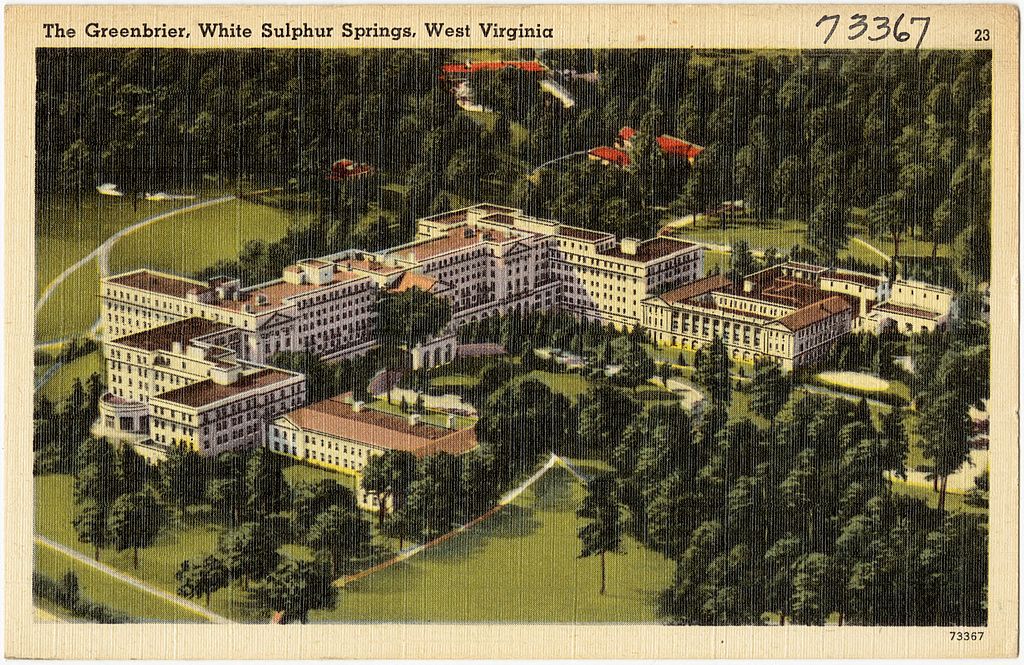
The Greenbrier, White Sulphur Springs, West Virginia, Boston Public Library collection, Wikipedia Commons.
County level research is important when trying to find the vital records of our ancestors. Birth, marriage, and death records typically are found on the county level. This means you will need to obtain a copy of these types of certificates from the local courthouse or other county repository, such as a county archives.
But what happens when the state or county wasn’t around when your ancestor lived there? Such is the case with this Genealogy Gems reader. Here is her question regarding West Virginia research:
I have a 3rd great-grandfather I am trying to find with his parents who may have been born in Greenbrier County, West Virginia. He was born in 1814. My question is that Greenbrier County was in Virginia at the time of his birth. Now it is in West Virginia which was made a state in the 1860s, so where do I look for his records? Finding his parents has been a brick wall! What would you suggest?
Birth Records in the 1800s
The first thing we want to address is the hope that this reader will find a birth record for 1814. Early birth records of this time-frame were typically kept by the churches in the form of christening or baptismal records. Civil registrations of births, which were created by the local or federal government, were not kept regularly for American states until much later. The earliest cities and states to require civil registration can be seen here, but a few examples include: New York in 1880, Virginia in 1853,and Florida in 1865. [1]
Because birth records can not always be located in church or civil registration for this early time period, we suggest using alternate records as your supporting evidence. Substitute birth records might be, but are not limited to: school records, censuses, pension records, marriage records, and biographical sketches. (Click these links to learn more about each type of record.)
West Virginia Genealogy Research: County Level
Next, let’s discuss the uniqueness of researching in West Virginia. West Virginia was created in 1863 out of the state of Virginia. Many of the counties that were once in Virginia, kept the same name and retained their records when they became part of West Virginia.
There is a wonderful resource in the book titled “Red Book: American State, County, and Town Sources” which was edited by Alice Eichholz. This book has a chart for each U.S. state listing the year each county was formed and from what parent county. To find the chart, flip through to the West Virginia section. Each county is listed in alphabetical order. In this case, we would locate “Greenbrier” and take note that according to the chart, Greenbrier County, West Virginia was formed in 1778 by portions of both Montgomery and Botetourt County, Virginia. A chart like this is helpful for any genealogist in determining which counties should be researched.
Greenbrier County, West Virginia: A Timeline of Changing County Boundaries
I took the liberty of looking further into Greenbrier County, West Virginia by examining more closely the changing county boundaries of this county over time. I did this by using the chart I mentioned above found in the Red Book. First, I found Greenbrier county and it’s parent county, then, I searched the list for further instances when parts of Greenbrier county were used to form newer counties. You see, we want to see the changes of this county’s boundaries so that we know what possible places to look for records. Let me show you what I found. We are going to need a time line for this!
- 1778: Greenbrier county was originally formed in 1778 from two parent Virginia counties: Montgomery and Botetourt.
- 1788: part of Greenbrier County, Virginia became Kanawha County
- 1799: Greenbrier shrunk further when a portion of its boundaries became Monroe County, Virginia
- 1818: Nicholas County, Virginia formed from Greenbrier
- 1831: part of Greenbrier created the new county of Fayette, Virginia
- 1863: Greenbrier county, Virginia became part of the State of West Virginia
- 1871: Summers County, West Virginia was created by a small portion of Greenbrier
As you can see, our Genealogy Gems reader may need to visit and research several county repositories both within the state of Virginia and West Virginia.
Greenbrier county is rather unique, as it had boundary changes quite regularly. It may be difficult to visit each of these county courthouses, spanning many miles apart, in hopes of finding targeted records for their ancestor. For this reason, our reader may wish to begin at the West Virginia State Archives. At most state archive repositories, records for all the counties can be easily looked at via microfilm. This may save valuable travel time. (Note: Before visiting any state archives facility, call ahead to verify what information and records they have, so that you do not have a wasted trip.)
There is also a free guide at Family Tree Magazine for West Virginia genealogy research that we highly recommend.
More on Advanced Research Strategies
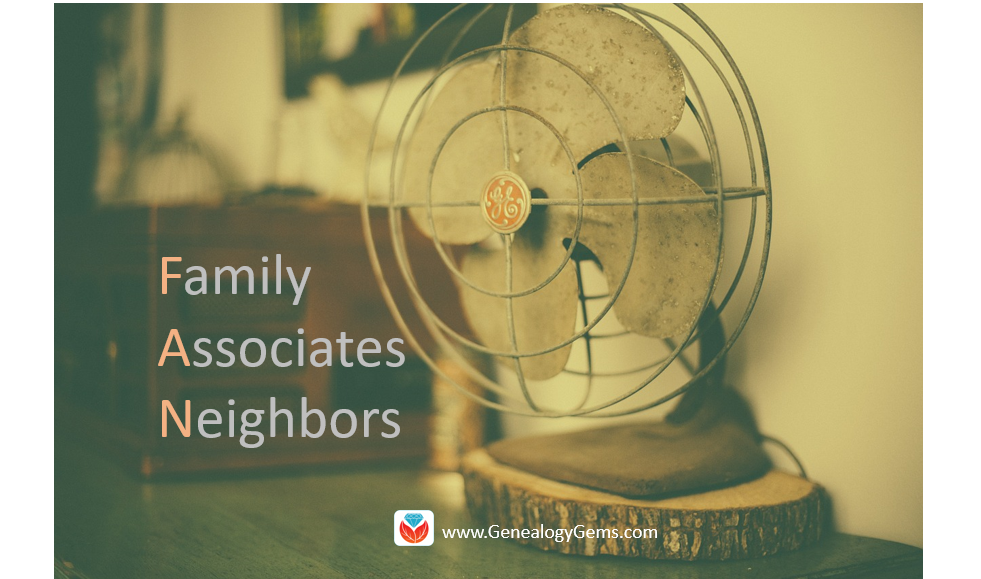 Changing county boundaries is just one area that must be mastered to ensure accurate genealogy research. Here are 3 more articles that will help you beef up your genealogy research skills:
Changing county boundaries is just one area that must be mastered to ensure accurate genealogy research. Here are 3 more articles that will help you beef up your genealogy research skills:
The Genealogy FAN Club Principle Overcomes Genealogy Brick Walls
Missing Census or Missing Family: Legacy Tree Genealogists Answer
Resolving Three Common Conflicting Evidence Problems in Genealogy
ARTICLE REFERENCES
[1] Johni Cerny, “Births and Deaths in Public Records,” originally written in “The Source: A Genealogist’s Guidebook to American Genealogy,” online article, Ancestry Wiki, accessed 20 Feb 2017.
by Lisa Cooke | Apr 1, 2016 | 01 What's New, Records & databases
Here’s our weekly roundup of new genealogy records online. This week: Australia, Belgium, Czech Republic, England, Germany, Japan, Mexico, Wales and U.S. passport 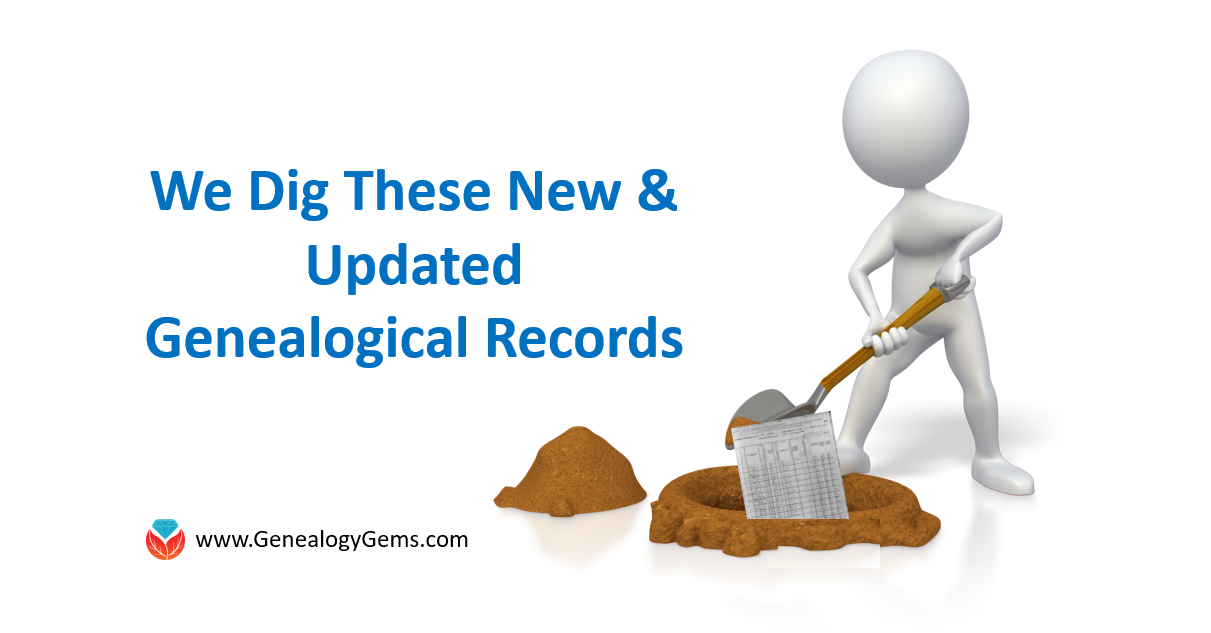 and homestead records.
and homestead records.
AUSTRALIA – QUEENSLAND. Ancestry.com has added several indexes for Queensland, Australia: Prison and Reformatory Indexes (1824-1936), Property Indexes (1842-1895), Index to Aliens (1913) and Occupational Indexes (1857-1922). These indexes all come from the Queensland State Archives. You can search them for free at Ancestry.com or from the QSA website.
BELGIUM CIVIL REGISTRATIONS. FamilySearch has updated its civil registration collections for several parts of Belgium (dating back to the 1500s for some areas): Antwerp, Brabant, East Flanders, Hainaut, Liège and West Flanders. According to FamilySearch, these collections include “civil registration(s) of births, marriages and deaths from the Belgium National Archives. The collection also includes marriage proclamations, marriage supplements, and some original indexes.”
CZECH REPUBLIC SCHOOL REGISTERS. Over a million browsable digital images from the Opava State Regional Archive have been added to a free collection of Czech Republic School Registers (1799-1953) at FamilySearch.org. “School registers contain the full name for a child, birth date, place of birth, country, religion and father’s full name, and place of residence.”
ENGLAND AND WALES SCHOOL RECORDS. Findmypast.com has just added about 687,000 new school admission records for 41 counties in England and Wales (1870-1914). Original records may include names, residence, birth data, school name and location, parents’ names, admission information, father’s occupation, any exemption from religious instruction, previous school attendance, illnesses/absence and even exam results.
ENGLAND – CORNWALL. Several new collections on Cornwall are searchable at Ancestry.com: Congregational and Baptist Church Registers (1763-1923), Workhouse Admission and Discharge Records (1839-1872), Militia and Sea Fencibles Index (1780 – 1831), Bodmin Gaol Records (1821-1899), Penzance Dispensary Admissions (1828-1841), Truro Police Charge Books (1846-1896) and Inmates at St. Lawrence’s Asylum, Bodmin (1840-1900).
GERMANY VITAL RECORDS. Ancestry.com has recently added a new collection of death records for Mannheim. It has also updated collections of birth records for Hamburg; birth, marriage and death records for Regen County (dating to 1876) and birth, marriage and death records for Oldenberg.
JAPAN GENEALOGIES AND VILLAGE RECORDS. FamilySearch.org has added nearly a quarter million browsable images to its collection of Japanese village records (dating back to 709 AD) and nearly 60,000 browsable records to its collection of Japanese genealogies (dating to 850 AD).
MEXICO CIVIL REGISTRATIONS. Ancestry.com has updated its collections of indexed images to Chihuahua, Mexico birth, marriage and death records from civil registrations. The collections are in Spanish, so use Spanish names and locations.
U.S. HOMESTEAD RECORDS. Ancestry.com’s collection of U.S. Homestead Records (1861-1936) has recently been updated. According to the collection description, “Homestead files consist of unbound documents that include final certificates, applications with land descriptions, affidavits showing proof of citizenship, register and receiver receipts, notices and final proofs, and testimonies of witnesses. These documents are part of the Records of the Bureau of Land Management (formerly known as the General Land Office), Record Group (RG) 49. The collection currently includes records from Arizona, Indiana, Nebraska, Nevada, Ohio, and part of Iowa. Additional records will be added in future updates.”
U.S. PASSPORTS. Nearly 40,000 indexed names have been added to FamilySearch.org’s free collection of United States Passport Applications (1795-1925). These are a fantastic resource for finding immigrant ancestors and those who traveled a lot. Click here to learn more about U.S. passport records.

Thanks for sharing this post with others who have ancestors from these parts of the world. You’re a gem!
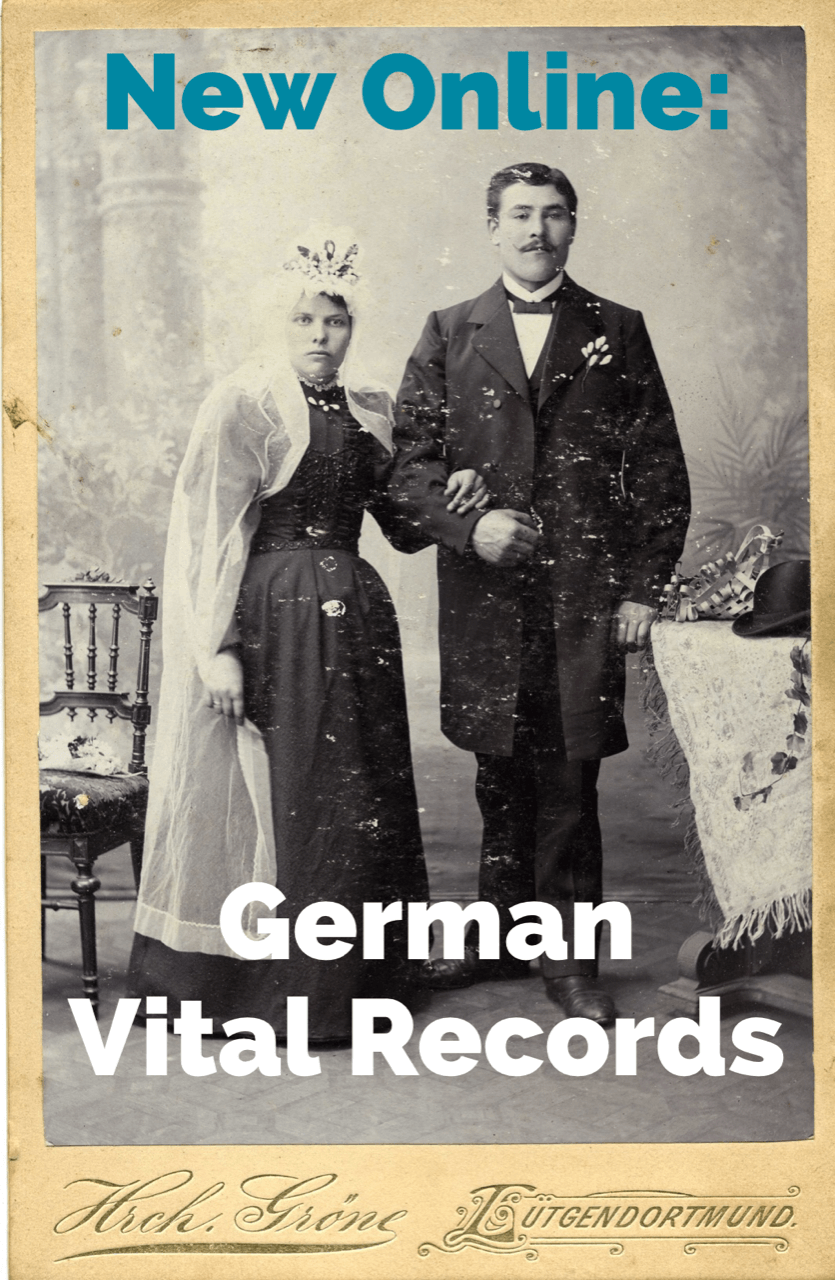


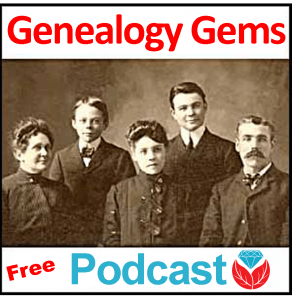
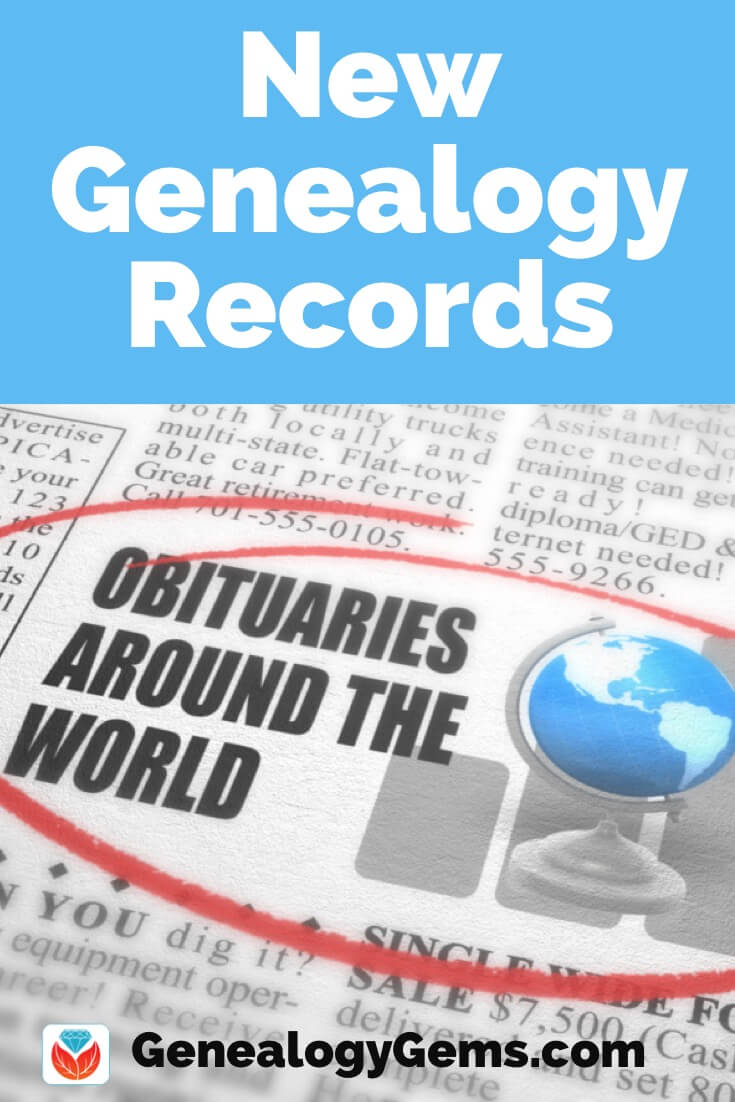

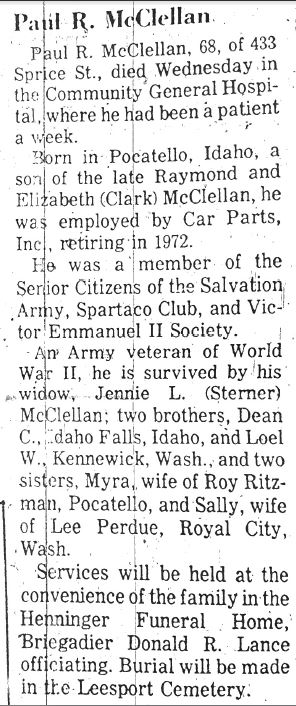
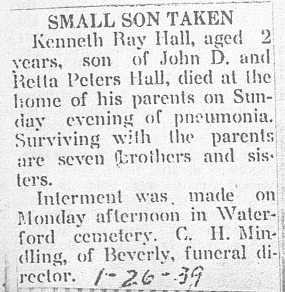



 Getting started on Ancestry.com can be a little daunting. As one of the world’s top genealogy websites, it’s packed with information about millions of people–perhaps including your ancestors. These step-by-step instructions will help you start building your family tree and learning more about your heritage. Click to read our recent article
Getting started on Ancestry.com can be a little daunting. As one of the world’s top genealogy websites, it’s packed with information about millions of people–perhaps including your ancestors. These step-by-step instructions will help you start building your family tree and learning more about your heritage. Click to read our recent article 
 Changing county boundaries is just one area that must be mastered to ensure accurate genealogy research. Here are 3 more articles that will help you beef up your genealogy research skills:
Changing county boundaries is just one area that must be mastered to ensure accurate genealogy research. Here are 3 more articles that will help you beef up your genealogy research skills: and homestead records.
and homestead records.



